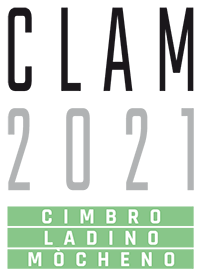
Surveyors Share Their Insights
24 May 2022
Bilingualism in the Family
6 July 2022One of the initial questions posed in the CLaM 2021 sociolinguistic survey questionnaire is: Which language do you identify as your mother tongue?
What does “mother tongue” mean?
The expression ‘mother tongue‘ has several synonyms or nearly synonymous terms. Each emphasizes a different feature of the language we consider ours: when we speak of ‘mother tongue,‘ there is a strong reference to the language spoken in childhood, particularly by the mother; we can also talk about ‘native language’, an expression that relates to the language we are exposed to (or mainly exposed to) from birth; finally, it is also common to employ the phrase ‘first language’ (or L1), in regard to a dominant language compared to a potential L2, or L3 of the speaker. No matter the label assigned, recognition can sometimes be challenging, especially in multilingual contexts where speakers are exposed to and actively use two or three languages in different communicative settings.
The mother tongue declared
Despite possible uncertainties, the responses obtained to the above question within the survey reveal clear indications of the languages perceived as their own by the 3,616 informants from the areas where a minority language is spoken in Trentino Alto Adige and Veneto.
- There are 2,094 people who declared Ladin or its varieties as their mother Ladin (the names used to identify the mother tongue differ, encompassing general terms like Ladin and more specific ones like moenat).
- 160 people declare Mòcheno as their mother tongue (labels of different varieties are displayed also here);
- 65 people declare Cimbrian or the specific variety of Luserna as their mother tongue;
- 1,315 identify Italian as their mother tongue;
- 194 declare German;
- 53 declare a dialect of the Trentino.
We received a total of 3,881 responses from 3,616 completed questionnaires. The calculation therefore included 265 people who identified not just one, but two languages as their mother tongue.
Language used for questionnaire
Comparing the responses regarding the mother tongue with the language chosen to compile the questionnaire, which was offered in different languages and varieties with the choice left to the informants, is interesting.
The number of questionnaires completed in Ladin varieties is 2,014, slightly lower than the count of those who recognize themselves as native Ladin speakers; 1,318 questionnaires completed in Italian, nearly matching the number of declared native Italian speakers; in German, 96 questionnaires were filled out ,less than half of the number of self-reported native speakers; for Mòcheno, 74 questionnaires were completed, under half of the count of those claiming this language as their mother tongue; 46 questionnaires were filled out in Cimbrian, which is about two-thirds of the number of people who reported Cimbrian as their mother tongue.
One first key finding highlighted by the results is the contrast between the perception / declaration of the language people identify as their own and their actual use of it across various contexts, particularly evident in the case of Mòcheno and Cimbrian.
Patrizia Cordin





